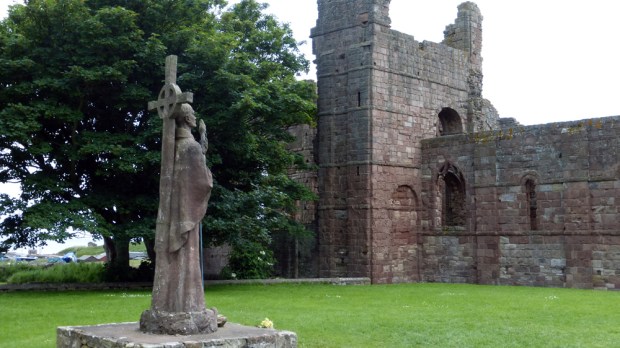Known worldwide for the intricate and colorful manuscripts of the Gospels produced by their monks, the Lindisfarne priory stands as a ruined shell on a tidal island off the northern coast of England. Its 12th-century stones draw thousands of tourists to Northumberland each year.
But some historians believe the original monastery, founded by the Irish monk St. Aidan in 635 and later sacked by the Vikings, lies beneath a town nearby.
“Most of Aidan’s monastery probably lies under the modern village, and we’re not going to be able to knock that down — but we have had some encouraging geophysics results indicating structures under some areas of open ground which we will be able to get at,” David Petts, a lecturer at Durham University and an expert on the history of Lindisfarne, told The Guardian.
Petts will lead an excavation team in June, and he’s soliciting the public’s help in paying for the project.
The money for the excavation has been raised through a crowdfunding project, Dig Ventures, founded by three archaeologists to fill the gap left by the sharp decline in funding of research archaeology by universities and local authorities. It is also to encourage the public to engage directly with both excavations and post-excavation analysis. Petts said it would have been almost impossible to raise the money for the Lindisfarne project any other way given the present funding climate.
Petts believes that at its height, Aidan’s monastery spread far further than the present ruins, which have been celebrated over the centuries in poetry and painting. The Lindisfarne Gospels, created in the late seventh or early eighth century, are now in the British Library.

